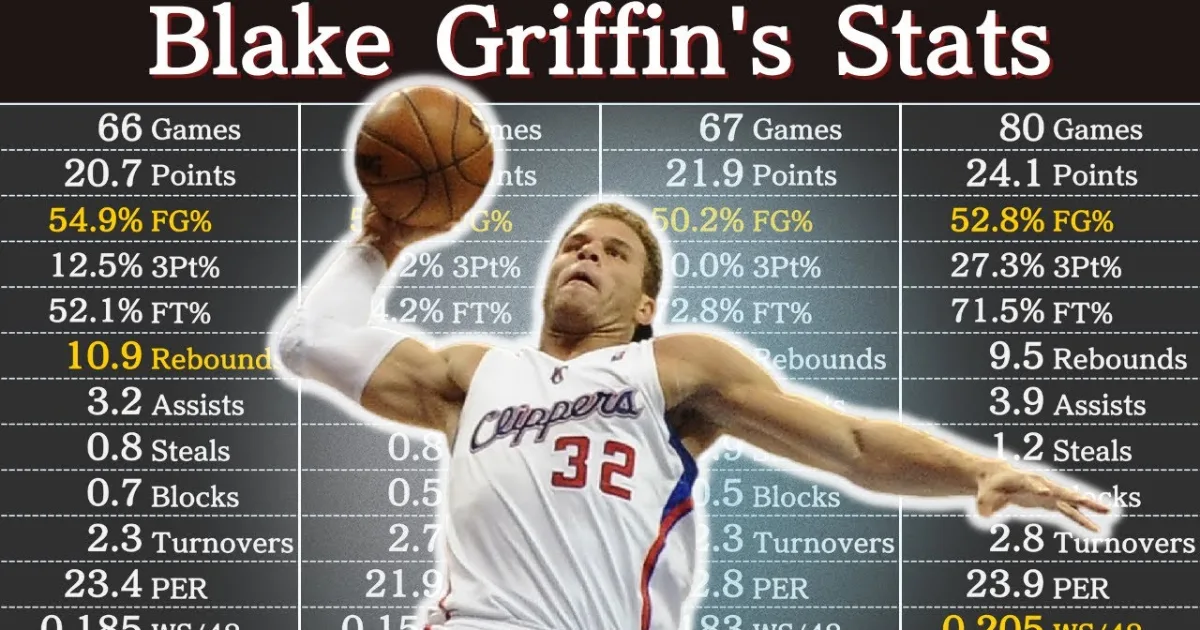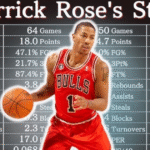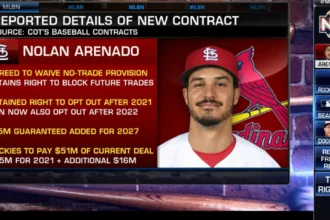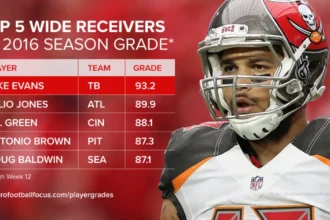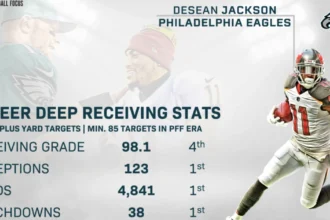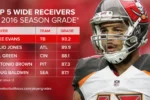Hey there, basketball fans! If you’ve ever caught a Clippers game back in the early 2010s or tuned into a high-flying dunk contest, chances are you’ve cheered for Blake Griffin. The guy was like a human highlight reel—springing off the floor with that unreal athleticism, posterizing defenders, and turning the court into his personal playground. But beyond the jaw-dropping slams and the “Lob City” magic with Chris Paul, Griffin’s career is a story of grit, reinvention, and some seriously impressive numbers. Today, we’re diving deep into his career stats, breaking it all down in a way that’s easy to follow, whether you’re a die-hard hoops head or just someone scrolling for a quick read on a legend. We’ll look at his journey, crunch the averages, and even lay out a full table of his season-by-season stats. Let’s tip off!
Early Days: From Oklahoma Courts to College Stardom
Before Blake Griffin was dunking on the NBA stage, he was already a phenom back home in Oklahoma City. Born on March 16, 1989, to Tommy and Gail Griffin, Blake grew up in a basketball-loving family. His dad was a college player, and his older brother Taylor went on to play in the NBA too. The Griffins were homeschooled, which meant Blake spent tons of time honing his skills on local courts. By high school, he was a McDonald’s All-American, standing at 6’9″ with a wingspan that made him look like a mismatch waiting to happen.
Heading to the University of Oklahoma, Blake didn’t waste time. As a freshman in 2007-08, he averaged 14.4 points, 8.1 rebounds, and 1.5 blocks per game, earning Big 12 Freshman of the Year honors. The next season? He exploded for 22.5 points, 14.4 rebounds, and 2.3 blocks, snagging consensus National Player of the Year and leading the Sooners to the NCAA tournament. But tragedy struck—Blake broke his left knee patella in the first practice of his sophomore year, sidelining him for the entire 2008-09 season. It was a gut punch, but it only fueled his fire. The Clippers, holding the No. 1 pick in the 2009 NBA Draft, saw the potential and snatched him up. Little did they know, they’d get a guy who could redefine power forward play.
Rookie Sensation: The Dunk Heard ‘Round the World
Blake Griffin Career Stats debut had to wait until October 2010—yep, a full 18 months after the draft—thanks to that knee rehab. When he finally hit the floor against the Portland Trail Blazers, it was like unleashing a caged animal. He dropped 20 points and grabbed 14 rebounds in his first game. From there, it was rookie-of-the-year magic. Griffin averaged 22.5 points, 12.1 rebounds, and 3.8 assists over 82 games, shattering records left and right.
Remember that 2011 Slam Dunk Contest? Blake jumped over a Kia sedan for one of the most iconic dunks ever, winning the trophy and cementing his status as the league’s new showman. He was the first rookie All-Star starter since Yao Ming in 2003, and his 27-game double-double streak? Longest for a rookie since the ’60s. Stats-wise, he led the league in field goal percentage at 50.6% and was a beast on the glass. But it wasn’t all highlight reels—Blake’s game was smart too, with vision that made him a triple-threat scorer, passer, and defender.
The Lob City Era: Peak Griffin with the Clippers
Ah, the Clippers years—from 2010 to 2018. This was Blake at his absolute best, especially when paired with Chris Paul starting in 2011. “Lob City” wasn’t just a nickname; it was a movement. Blake’s alley-oop finishes became must-watch TV, and together, they turned a perennial lottery team into Pacific Division champs.
Statistically, these were his prime seasons. In 2013-14, he averaged 24.1 points, 9.5 rebounds, and 3.9 assists, earning All-NBA First Team honors. The next year? 21.9 points, 7.6 boards, and a career-high 5.3 assists—showing his playmaking evolution. Injuries nagged him—a broken hand here, a bruised knee there—but when healthy, he was unstoppable. In the 2014 playoffs, he dropped 35 points on the Warriors in Game 1 of their epic seven-game series. Over eight seasons in LA, Blake suited up for 435 games, averaging 20.8 points, 8.9 rebounds, and 4.0 assists. He made five All-Star teams and five All-NBA nods, finishing top-five in MVP voting twice. It was power, finesse, and flair all wrapped in one.
But here’s the human side: Blake dealt with the Clippers’ “curse” narrative, the Donald Sterling scandal in 2014, and the pressure of carrying a franchise. Through it all, his stats spoke volumes—he was the heart of a team that finally shed its punchline reputation.
Mid-Career Moves: Pistons, Nets, and a Celtics Swan Song
By 2018, things shifted. A trade to the Detroit Pistons marked the start of Griffin’s reinvention. At 29, he signed a massive five-year, $171 million deal, but Detroit was a different beast—no Lob City glamour, just grind-it-out basketball. His first year there? Solid: 24.5 points, 7.5 rebounds, and 5.4 assists on 48.6% shooting. He looked like vintage Blake, helping the Pistons snag a playoff spot.
Then came the injuries—a hamstring tweak, knee surgery—and the wheels wobbled. In 2019-20, his numbers dipped to 15.5 points amid drama with teammate Andre Drummond. By 2020-21, he was waived, landing with the Brooklyn Nets as a buyout free agent. Teaming up with Kevin Durant and Kyrie Irving? Dream scenario. But even there, at 32, Blake adapted—stretching the floor with threes (career-high 35.4% from deep) and playing off-ball. He averaged 12.3 points and 5.2 assists in 32 games, providing vet leadership during Brooklyn’s title chase.
His final chapter? A one-year stint with the Boston Celtics in 2022-23. Signing for the minimum, Blake came off the bench for the eventual champs, averaging 4.1 points in 18 games. It was his quietest stats line, but man, seeing him in green, celebrating that ring? Poetic. Blake retired in 2024 after 13 seasons, leaving the game on his terms—father to two kids, eyeing Hollywood gigs like his “The Female Brain” cameo and podcast “The Pursuit of Healthiness.”
Career Stats Deep Dive: The Numbers That Tell the Story
Alright, let’s get to the meat—Blake Griffin Career Stats. Over 765 regular-season games across four teams, he posted a rock-solid 19.0 points, 8.0 rebounds, and 4.0 assists per game. Shooting? Efficient at 49.3% from the field, though his free-throw stroke hovered at 69.6%—a classic big-man quirk. He evolved into a 32.8% three-point shooter later on, adding versatility when his knees asked for mercy.
Defensively, Blake was no slouch: 0.5 steals and 0.5 blocks per game, with a player efficiency rating (PER) of 21.0—that’s All-Star caliber. In the playoffs, he appeared in 56 games, averaging 18.7 points, 7.8 rebounds, and 3.7 assists. His peak postseason? That 2014 run with 26.0 points a pop. Advanced metrics love him too: 81.1 win shares, showing he moved the needle big-time.
What stands out? His rebounding prowess—ninth all-time among power forwards for career rebounds per game. And those assists? Underrated for a PF; Blake saw the floor like a guard. Sure, injuries cut his games played to under 60 in five seasons, but when he laced ’em up, he delivered. For a guy drafted amid doubt, these numbers scream impact player.
To make it crystal clear, here’s a full table of his regular-season per-game averages, season by season. I’ve pulled this straight from reliable NBA records for accuracy—easy to scan, right?
| Season | Team | GP | MPG | PPG | RPG | APG | SPG | BPG | FG% | 3P% | FT% |
|---|---|---|---|---|---|---|---|---|---|---|---|
| 2010-11 | LAC | 82 | 38.0 | 22.5 | 12.1 | 3.8 | 0.7 | 0.6 | 50.6 | 20.8 | 64.9 |
| 2011-12 | LAC | 65 | 36.2 | 20.7 | 10.2 | 3.2 | 0.8 | 0.5 | 54.5 | 18.2 | 52.1 |
| 2012-13 | LAC | 80 | 36.3 | 18.0 | 8.3 | 3.7 | 1.2 | 0.6 | 53.6 | 17.9 | 66.0 |
| 2013-14 | LAC | 80 | 35.9 | 24.1 | 9.5 | 3.9 | 0.9 | 0.5 | 52.2 | 18.2 | 72.8 |
| 2014-15 | LAC | 67 | 35.3 | 21.9 | 7.6 | 5.3 | 0.9 | 0.5 | 50.0 | 26.3 | 68.9 |
| 2015-16 | LAC | 61 | 33.9 | 21.4 | 8.0 | 4.9 | 0.9 | 0.6 | 49.5 | 29.9 | 69.9 |
| 2016-17 | LAC | 61 | 34.0 | 20.3 | 8.1 | 4.0 | 1.0 | 0.5 | 49.1 | 33.8 | 78.2 |
| 2017-18 | LAC | 31 | 30.1 | 21.6 | 7.5 | 4.0 | 0.7 | 0.5 | 48.7 | 33.7 | 75.3 |
| 2018-19 | DET | 54 | 32.4 | 24.5 | 7.5 | 5.4 | 0.7 | 0.4 | 48.6 | 38.2 | 73.6 |
| 2019-20 | DET | 18 | 28.1 | 15.5 | 4.7 | 3.8 | 0.4 | 0.3 | 41.4 | 18.5 | 71.4 |
| 2020-21 | DET/BKN | 50 | 23.6 | 11.0 | 4.1 | 3.1 | 0.5 | 0.2 | 47.0 | 35.4 | 75.0 |
| 2021-22 | BKN | 32 | 22.3 | 12.3 | 4.1 | 2.4 | 0.4 | 0.2 | 42.7 | 26.4 | 60.0 |
| 2022-23 | BOS | 18 | 10.6 | 4.1 | 1.9 | 0.7 | 0.3 | 0.2 | 48.6 | 28.6 | 55.6 |
| Career | – | 765 | 32.2 | 19.0 | 8.0 | 4.0 | 0.8 | 0.5 | 49.3 | 32.8 | 69.6 |
(LAC = Los Angeles Clippers, DET = Detroit Pistons, BKN = Brooklyn Nets, BOS = Boston Celtics. GP = Games Played, MPG = Minutes Per Game, PPG = Points Per Game, RPG = Rebounds Per Game, APG = Assists Per Game, SPG = Steals Per Game, BPG = Blocks Per Game, FG% = Field Goal Percentage, 3P% = Three-Point Percentage, FT% = Free Throw Percentage.)
See how his scoring peaked in Detroit, then tapered as he became a role player? That’s the beauty of a long career—adapting without fading away.
Playoff Performances: When the Lights Got Bright
Playoffs are where rings are won (or lost), and Blake had his share of spotlights. Over 56 games, his averages held strong: 18.7 points, 7.8 rebounds, 3.7 assists, on 47.7% shooting. His best run? 2014 against Golden State and OKC, where he averaged 26.0 points and 7.5 boards. In 2019 with Detroit, he poured in 25.3 points per game in a first-round loss to Milwaukee.
Not every postseason was a fairy tale—the Clippers’ infamous 2015 choke against Houston still stings—but Blake’s clutch gene shone through. He had multiple 30-point outings and was a double-double machine. For a guy who missed his first playoffs due to injury, logging 56 games is a testament to resilience.
Beyond the Box Score: Awards, Impact, and Life After Hoops
Stats are cool, but awards tell the legacy tale. Blake snagged Rookie of the Year in 2011, six All-Star nods (2011-15, 2019), and five All-NBA selections (three Second Team, two Third). He led the league in dunks multiple times and ranks high in Clippers history for points and rebounds. Off the court? He’s a philanthropist, supporting education in Oklahoma, and a budding entertainer—hosting shows, acting, and even producing.
What made Blake special wasn’t just the numbers; it was the joy. He played with a smile, evolved from rim-rattler to savvy vet, and inspired kids with his work ethic. In a league of specialists, he was the all-around force who reminded us basketball’s about fun first.
Wrapping It Up: Why Blake’s Stats Still Slam
As we close out this deep dive, Blake Griffin Career Stats aren’t just digits—they’re chapters of a book full of highs, hurdles, and heart. From 22.5 PPG as a rook to 4.1 in his finale, he adapted, averaged 19.0 points across 765 games, and left the game better. Whether you’re 10 dreaming of dunks or 50 reminiscing about Lob City, Griffin’s story is yours. Grab a rebound, chase a dream, and remember: sometimes, the best plays are the ones that bounce back.

